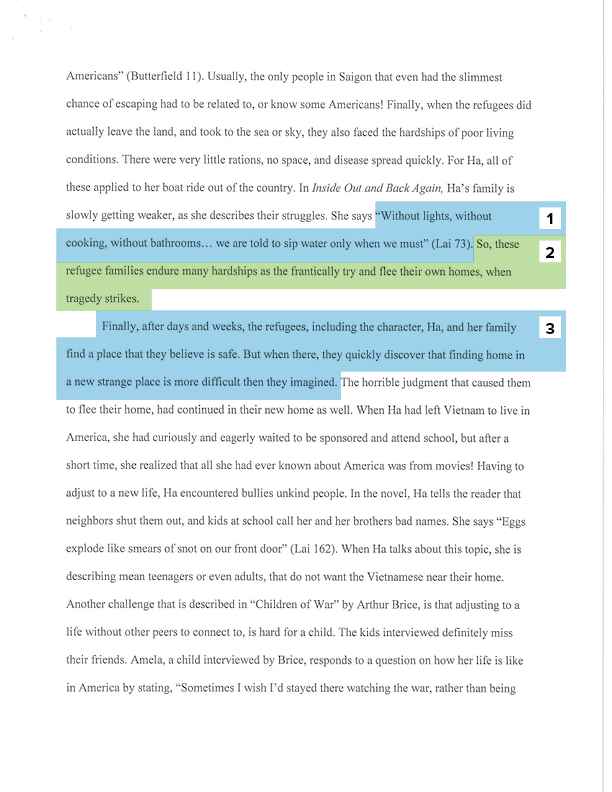All students should graduate from high school ready for college, careers, and citizenship.


1. CCSS Alignment
Strong textual evidence was chosen in paragraph 2 – “Without lights, without cooking, without bathrooms…” to support the student’s inference that refugee families endured many hardships as they fled their homes.
Standard referenced:
RL.8.1: Cite the textual evidence that most strongly supports an analysis of what the text says explicitly as well as inferences drawn from the text.
2. Understanding
The student includes analysis and reflection statements like “Especially during war, escape was nearly impossible with people threatening some and attacking others” and “So, these refugee families endure many hardships as they frantically try and flee their own homes, when tragedy strikes…” that transition between quotes to connect back to the student’s claim on the refugee experience of “fleeing” home.
Standard referenced:
W.8.9: Draw evidence from literary or informational texts to support analysis, reflection, and research.
3. CCSS Alignment
The student demonstrates proficiency in RI.8.3 by analyzing the connection among Ha in the novel and the refugees in the informational text. The student does this by threading a common theme of the universal refugee experience throughout the textual evidence, specifically the challenges faced fleeing and finding home. For example: “The refugees, including the character Ha and her family find a place that they believe is safe. But when there, they quickly discover that finding home in a new strange place is more difficult than they imagined.”
Standard referenced:
RI.8.3: Analyze how a text makes connections among and distinctions between individuals, ideas, or events (e.g., through comparisons, analogies, or categories).
